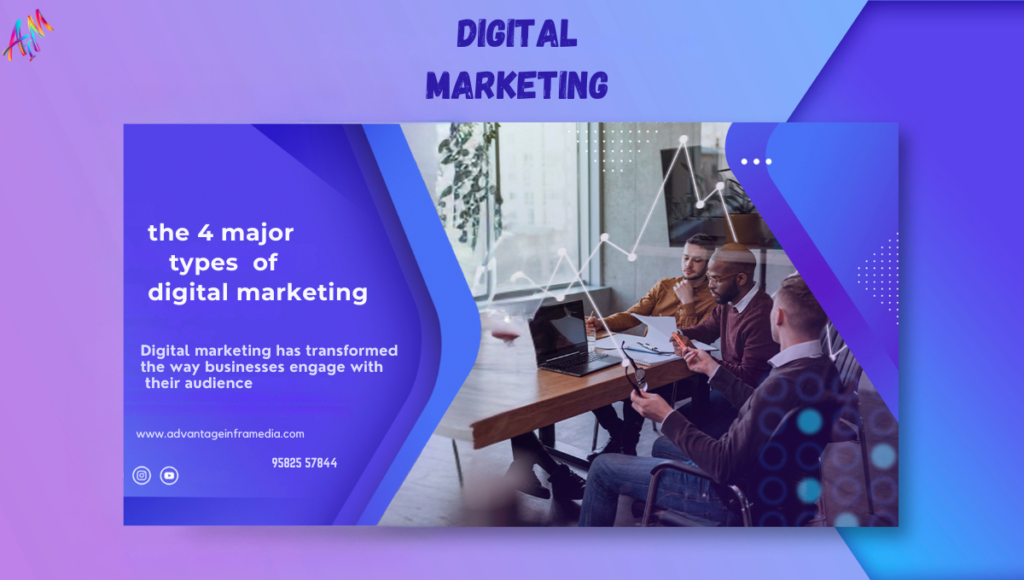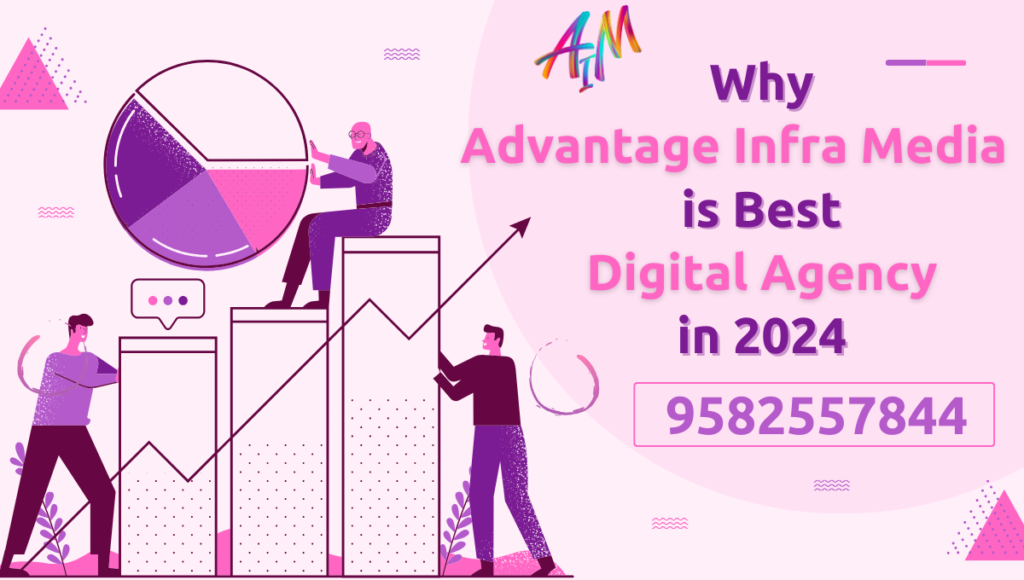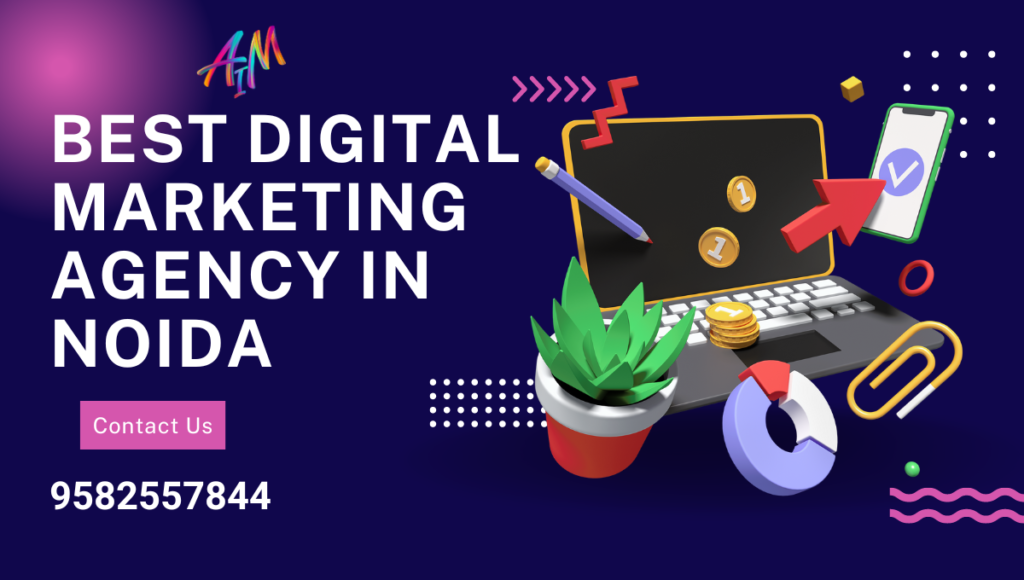Digital marketing has transformed the way businesses engage with their audience, leveraging the power of the internet to create impactful campaigns that reach a global audience. In this blog, we will explore the four major types of digital marketing: Search Engine Optimization (SEO), Pay-Per-Click Advertising (PPC), Content Marketing, and Social Media Marketing (SMM). Each of these strategies plays a crucial role in the digital marketing landscape, offering unique benefits and opportunities for businesses to grow and succeed.
Search Engine Optimization (SEO)
What is SEO?
Search Engine Optimization (SEO) is the process of optimizing a website to rank higher on search engine results pages (SERPs) for specific keywords or phrases. The primary goal of SEO is to increase organic (non-paid) traffic to a website. SEO encompasses both on-page and off-page activities, focusing on improving the website’s relevance and authority.
Key Components of SEO
On-Page SEO: This involves optimizing individual web pages to rank higher and earn more relevant traffic in search engines. Key factors include:
- Keyword Research: Identifying the right keywords that potential customers use to find products or services.
- Content Quality: Creating high-quality, informative, and engaging content that satisfies user intent.
- Meta Tags: Crafting compelling meta titles and descriptions to improve click-through rates.
- Internal Linking: Structuring internal links to help search engines understand the hierarchy and context of content.
Off-Page SEO: This focuses on activities outside the website to improve its authority and ranking. Key factors include:
- Backlink Building: Acquiring high-quality backlinks from reputable websites to increase domain authority.
- Social Signals: Leveraging social media activity to enhance online presence and credibility.
- Guest Blogging: Writing articles for other websites to gain exposure and backlinks.
Benefits of SEO
- Cost-Effective: While it requires an investment of time and resources, organic traffic is free.
- Sustainable Results: Proper SEO can lead to long-term visibility and traffic.
- Trust and Credibility: Higher rankings signal credibility and trustworthiness to users.
Challenges of SEO
- Time-Consuming: Achieving high rankings can take months of consistent effort.
- Algorithm Changes: Search engine algorithms are constantly evolving, requiring continuous adaptation.
- Competitive: High competition for popular keywords can make it difficult to achieve top rankings.
Pay-Per-Click Advertising (PPC)
What is PPC?
Pay-Per-Click (PPC) advertising is a model where advertisers pay a fee each time their ad is clicked. It’s a way of buying visits to a site rather than earning them organically. Google Ads is the most popular PPC platform, but there are other platforms like Bing Ads, Facebook Ads, and Instagram Ads.
Key Components of PPC
Keyword Research: Identifying and bidding on the right keywords that potential customers are searching for.
Ad Copy: Crafting compelling and relevant ad copy that attracts clicks and conversions.
Landing Pages: Designing optimized landing pages that provide a seamless user experience and encourage conversions.
Bid Management: Adjusting bids to maximize ROI while staying within budget constraints.
Performance Tracking: Monitoring and analyzing campaign performance to make data-driven adjustments.
Benefits of PPC
- Immediate Results: Ads can start driving traffic as soon as they are live.
- Targeted Advertising: Allows precise targeting based on demographics, location, interests, and more.
- Scalability: Easily scalable to match business goals and budget.
Challenges of PPC
- Costly: Can be expensive, especially for competitive keywords.
- Short-Term: Traffic stops when the campaign ends or the budget is exhausted.
- Management Intensive: Requires ongoing management and optimization to maintain performance.
Content Marketing
What is Content Marketing?
Content Marketing involves creating and sharing valuable, relevant, and consistent content to attract and retain a clearly defined audience. The ultimate goal is to drive profitable customer actions. Content marketing can take various forms, including blog posts, videos, infographics, podcasts, eBooks, and whitepapers.
Key Components of Content Marketing
Content Creation: Developing high-quality, engaging content that addresses the needs and interests of the target audience.
Content Distribution: Sharing content across various platforms to reach a broader audience, including social media, email newsletters, and content syndication.
Audience Research: Understanding the audience’s pain points, preferences, and behaviors to create relevant content.
Content Optimization: Using SEO best practices to ensure content is discoverable by search engines and users.
Performance Analysis: Measuring content performance to understand what works and make data-driven improvements.
Benefits of Content Marketing
- Builds Authority: Establishes the brand as an industry leader and trusted source of information.
- Engages Audience: Keeps the audience engaged and encourages loyalty through valuable content.
- Supports SEO: High-quality content improves search engine rankings and drives organic traffic.
Challenges of Content Marketing
- Time-Intensive: Creating high-quality content requires significant time and effort.
- Consistency Needed: Regularly producing and distributing content is crucial for sustained success.
- Measurement Complexity: Measuring the ROI of content marketing can be challenging due to its long-term nature.
Social Media Marketing (SMM)
What is Social Media Marketing?
Social Media Marketing (SMM) involves using social media platforms to promote products, services, or brands. SMM aims to engage with the audience, build brand awareness, drive traffic, and generate leads or sales. Popular social media platforms include Facebook, Instagram, Twitter, LinkedIn, and Pinterest.
Key Components of SMM
Platform Selection: Choosing the right social media platforms based on the target audience and business goals.
Content Strategy: Developing a content plan that includes a mix of posts, stories, videos, and live sessions.
Engagement: Interacting with followers by responding to comments, messages, and participating in conversations.
Advertising: Running paid social media campaigns to reach a larger and more targeted audience.
Analytics: Monitoring social media metrics to understand performance and make informed decisions.
Benefits of SMM
- Widespread Reach: Access to a large and diverse audience across different demographics.
- Engagement: Direct interaction with customers, fostering community and loyalty.
- Cost-Effective: Many social media activities are free, with paid options available for increased reach.
Challenges of SMM
- Time-Consuming: Requires continuous monitoring and engagement to be effective.
- Negative Feedback: Public nature of social media can expose brands to negative comments and feedback.
- Constant Evolution: Rapid changes in social media algorithms and trends require adaptability.
Integrating the Four Types of Digital Marketing
Synergy and Strategy
To maximize the benefits of digital marketing, businesses should integrate these four types into a cohesive strategy. Here’s how they can work together:
SEO and Content Marketing: Quality content optimized for SEO improves search rankings and drives organic traffic. Regular blog posts, infographics, and videos can attract backlinks, enhancing off-page SEO efforts.
PPC and SEO: Combining PPC and SEO provides both immediate and long-term benefits. While SEO builds organic traffic over time, PPC can generate quick results and help identify high-converting keywords for SEO efforts.
Content Marketing and SMM: Social media platforms are ideal for distributing content and driving engagement. Sharing blog posts, videos, and other content on social media increases reach and encourages interaction.
SMM and PPC: Paid social media campaigns complement organic efforts by targeting specific audiences and driving traffic to optimized landing pages, boosting conversions.
Measuring Success
To ensure the effectiveness of digital marketing efforts, businesses should establish clear metrics and KPIs for each type of marketing. Common metrics include:
- SEO: Organic traffic, keyword rankings, and backlinks.
- PPC: Click-through rates (CTR), conversion rates, and cost per conversion.
- Content Marketing: Page views, time on site, social shares, and lead generation.
- SMM: Engagement rates, follower growth, and referral traffic.
Regularly analyzing these metrics helps businesses refine their strategies, allocate resources effectively, and achieve their marketing goals.
Conclusion
In the ever-evolving digital landscape, understanding and leveraging the four major types of digital marketing—SEO, PPC, Content Marketing, and Social Media Marketing—is crucial for business success. Each type offers unique benefits and challenges, but when integrated into a cohesive strategy, they can drive significant growth and establish a strong online presence. By staying informed about industry trends, continuously optimizing efforts, and measuring success, businesses can navigate the digital marketing landscape effectively and achieve long-term success.




